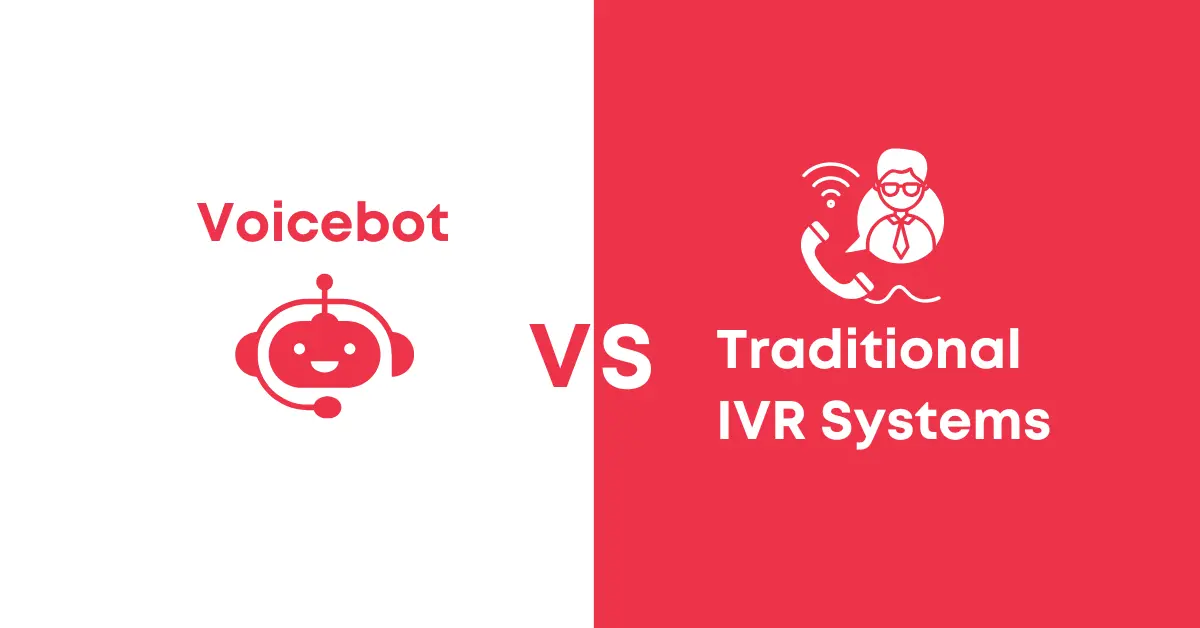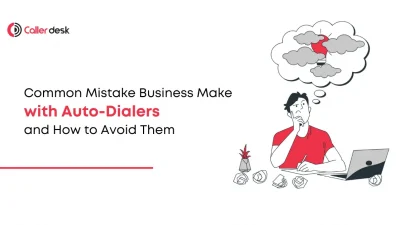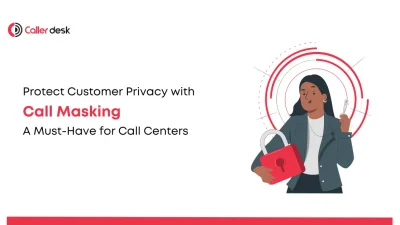Customers today expect quick, efficient, and seamless communication from businesses. Gone are the days when traditional IVR systems were enough. Now, advanced AI-powered Voicebots are taking customer interactions to the next level, making phone communication smarter, faster, and more personalized than ever before.
Choosing the right system can be challenging. While Voicebots offer conversational, human-like interactions, Traditional IVRs are often more budget-friendly and straightforward. So, which solution aligns best with your business goals and customer needs?
In this article, we’ll break down the key differences, benefits, and decision-making factors to help you make the best choice.
Understanding Voicebots and Traditional IVR Systems
Voicebots
Voicebots leverage Artificial Intelligence (AI), Natural Language Processing (NLP), and Machine Learning (ML) to interact with customers conversationally. These systems can:
- Understand spoken language.
- Interpret customer intent.
- Provide intelligent, dynamic responses.
They adapt to various scenarios, making them ideal for handling complex queries and providing a more human-like experience.
Traditional IVR Systems
Traditional IVR systems are automated telephony systems that rely on pre-recorded prompts and numeric keypad inputs. Customers navigate a structured menu to access services or departments. IVRs are reliable for handling basic queries and routing calls efficiently.
Key Differences Between Voicebots and Traditional IVR Systems
| Feature | Voicebots | Traditional IVR Systems |
| Flexibility | Recognizes natural language, enabling dynamic and adaptable conversations. | Relies on pre-set menus, which limits interaction scope. |
| Customer Experience | Delivers a human-like, conversational experience. | Can frustrate users with rigid options, especially for complex issues. |
| Efficiency | Resolves queries quickly using contextual understanding. | May slow down customer interactions due to menu constraints. |
| Scalability | Easily scales with minimal reconfiguration to handle diverse inquiries. | Scaling requires redesigning and reprogramming menu options. |
| Data Insights | Analyzes customer interactions to provide actionable business insights. | Limited data collection, restricting in-depth customer behavior analysis. |
Pros and Cons of Voicebots and Traditional IVR Systems
Voicebots Pros:
- Reduces Wait Times:
Customers receive instant responses, minimizing hold times and boosting satisfaction.
Example: A Voicebot can immediately assist with queries like “What’s the status of my order?” without transferring to an agent. - Adaptable and Personalized:
Voicebots use AI to learn and adapt to customer needs, ensuring each interaction feels personalized.
Example: Returning customers might receive tailored greetings or updates based on past interactions. - Enhanced Data Collection:
By analyzing voice interactions, businesses gain insights into customer behavior, preferences, and trends.
Voicebots Cons:
- Higher Initial Investment: Developing and deploying AI systems requires a significant upfront cost.
- Complex Maintenance: Requires specialized expertise for updates and troubleshooting.
Traditional IVR Systems Pros:
- Affordable and Accessible:
Lower setup costs make IVRs suitable for businesses with limited budgets.
Example: A small business can implement an IVR for basic routing like “Press 1 for sales, 2 for support.” - Ease of Implementation:
Quick to set up for handling straightforward inquiries and directing calls.
Traditional IVR Systems Cons:
- Limited Interaction Scope: Customers often struggle with rigid menu options that can’t accommodate nuanced requests.
- Customer Frustration: Repeatedly pressing buttons or navigating complex menus can lead to dissatisfaction.
Which is Right for Your Business?
Choosing between Voicebots and traditional IVR systems depends on your business size, complexity, and customer service goals. Here’s a detailed guide to help you make the right decision:
Voicebots Are Perfect If:
Voicebots are designed for businesses that need advanced, scalable solutions to enhance customer interactions. Here’s when they’re a perfect fit:
- Handling High Call Volumes: If your business receives a large number of inquiries daily, Voicebots can manage these efficiently by automating responses and reducing wait times.
- Personalized Customer Experiences: AI-driven Voicebots tailor interactions to individual customer needs, boosting satisfaction and loyalty. For instance, a Voicebot can remember a customer’s past orders and provide relevant recommendations.
- Actionable Analytics for Growth: Voicebots don’t just interact; they collect valuable data. Use these insights to track trends, improve services, and identify new opportunities.
- Scalability for Growing Businesses: Planning to expand? Voicebots can easily adapt to your growing needs, handling increased calls without additional staffing costs.
Example: An e-commerce company integrates Voicebots to resolve delivery issues, offering real-time updates, order tracking, and troubleshooting through conversational AI.
Traditional IVR Systems Work Best If:
IVR systems are a practical choice for businesses with simpler needs or tighter budgets. They work best in these scenarios:
- Budget-Conscious Operations: If affordability is key, IVR systems offer basic functionality like call routing and pre-recorded menus at a lower cost.
- Straightforward Customer Service Needs: For businesses with limited service requirements, such as providing store hours or routing calls to the right department, IVR systems are sufficient.
- Smaller Scale Operations: If you’re a small business with low call volumes and minimal resources for advanced technology, IVR systems deliver effective results.
Example: A local clinic uses an IVR system to help patients schedule appointments or get automated directions without needing live staff.
How to Make the Right Choice
- If your focus is on delivering exceptional, personalized customer service and scaling operations, Voicebots are the way to go.
- If your priority is cost-efficiency and simple functionality, traditional IVR systems are a reliable choice.
Conclusion
The choice between Voicebots and Traditional IVR Systems depends on your specific business needs and customer expectations. While Voicebots are perfect for delivering conversational, scalable, and data-driven interactions, IVRs remain a practical, cost-effective solution for simpler needs.
Ready to revolutionize your customer communication?
Contact Callerdesk for tailored solutions that align with your business goals.
Frequently Asked Questions
1. What are the main benefits of Voicebots over IVR Systems?
Voicebots offer conversational interactions, faster query resolution, and greater scalability compared to IVR systems.
2. Are Voicebots expensive to implement?
While the initial costs are higher, Voicebots provide long-term savings through enhanced efficiency and improved customer loyalty.
3. Can small businesses use Voicebots?
Yes, Voicebots are scalable and can be tailored to suit the needs of small businesses.
4. How does Callerdesk support Voicebot implementation?
Callerdesk provides end-to-end support, from integration to maintenance, ensuring your Voicebot solution works seamlessly.
5. Can I combine Voicebots with Traditional IVR Systems?
Absolutely! Many businesses use a hybrid model to balance cost-effectiveness with advanced functionality.





